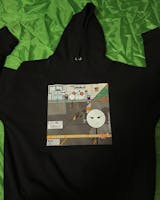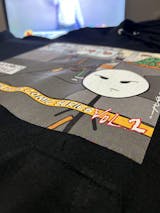Printing tape products are a process that appeals to many segments. It is a process used in many areas from band fans, to photos of pets, to logos. Printing tape products can be produced in many different shapes and purposes. You can learn how to make special clothes and accessories for your fans and loved ones with print tape products.
Printing Tape Production Stages:
Define Your Product Idea: The first step is to determine what type of printing tape products you want to make. For example, you can choose from different options, such as personalized packaging tapes, advertising printing tapes, security tapes or artistic prints.
Select Materials: You have to choose what material you want to make your printing tapes from. Usually plastic or paper tapes are used. Your choice of material will have an impact on the durability, stickiness and cost of the tape.
Create Your Design: You should prepare the design that will be printed on the printing tapes. You must determine the dimensions and printing characteristics of your design. You should also consider the details of the design, including color choices and graphics.
Select Printing Method: Select the method to use to transfer your design to print. These include different techniques such as flexo printing, screen printing, digital printing and offset printing. Which method you use will affect the quality and cost of your printing tape products.
Prepare the ingredients: The material of your choice is cut. This means determining the size and shape of the tapes In addition, preparations are made to clean the surface of the tapes and make them ready to print on them so that you can print the best.
Perform Printing: Your design is transferred to the material by the printing method you choose. This step is done with professional equipment or services for the printing process.
Cutting and Rolling: After the printing process is completed, the tapes are cut and rolled. This ensures that the products are ready for use.
Packaging & Distribution: Printed tape products are packaged securely and a proper logistics plan is in place to distribute to customers or points of sale.
Quality Control: The quality of the products is checked regularly and attention is paid to customer feedback Maintaining quality increases customer satisfaction.
Choosing the Right Fabric for DTF Printing Tape Products
Choosing the right fabric is critical to achieving successful results in your DTF printing facility. Here are some factors to consider when choosing the right fabric for DTF printing:
Polyester Fabrics: The most suitable fabric types for DTF printing are generally polyester-based fabrics. These types of fabrics ensure good adhesion of ink and obtain vibrant colors. Polyester makes it easier for the transfer film to adhere to the fabric.
Sublimation Capacity: Sublimation capacity of polyester fabrics is an important factor affecting the quality of DTF printing. Fabrics with high sublimation capacity help the ink penetrate better and obtain more vibrant colors.
Weave Pattern: The weave pattern of the fabric can affect printing results. Plain weave or fabrics with a low pilling tendency are better suited for smoother and clearer prints.
Fabric Weight: The weight of the fabric can affect printing results. Lighter fabrics may be better suited for thinner, lighter garments, while heavier fabrics may be preferred for more durable items.
Color Speed and Durability: In order to increase print quality and durability, fabrics with high color speed and durability should be preferred. This helps prints retain their color after washing and wear.
Surface Smoothness of the Fabric: The surface of the fabric must be smooth. Rough or fluffy fabrics can negatively affect print quality.
Ink Absorbency: Ideally, the fabric you choose should absorb ink well and allow the ink to penetrate thoroughly into the fabric. Suitability for Product Purposes: It is important that the fabric is suitable for your end use. You can choose a different type of fabric for T-shirt prints, and consider a different option for non-clothing products.









